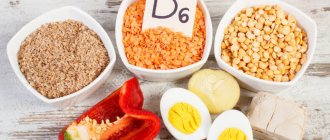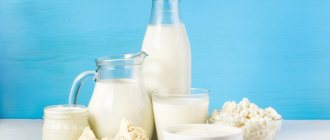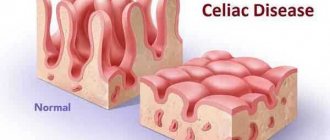The role of B vitamins for the body and immunity
This group of vitamins has a lot of common properties, which made it possible to combine them into one. The most important point is their water solubility. This allows vitamins not to accumulate in the body, but to be constantly washed out of the circulatory system by the ingested liquid.
One product can contain a whole list of B vitamins. Therefore, in the complex treatment of deficiencies, doctors give a whole list of elements that must be consumed. B vitamins are beneficial for the body in the following ways:
- normalize the functioning of the nervous system;
- improve the functions of the cardiovascular system;
- have a beneficial effect on the functioning of the intestinal tract;
- improve skin tone and elasticity;
- reduce the risk of stressful situations, stress on the body, help cope with depression and emotional stress;
- help in cell reproduction, strengthen muscle tone and improve energy metabolism;
- help strengthen the immune system and increase the body's resistance to various diseases.
Thanks to the complex intake of B vitamins in the body, the level of cholesterol in the blood is reduced, the processing of products in the digestive tract is accelerated, beneficial substances are better synthesized, and the process of metabolism of proteins, fats and carbohydrates is accelerated. Wounds, abrasions and bruises from injuries heal faster. At the same time, the level of pain is noticeably dulled.
The condition of the skin improves, the complexion evens out, and eczema goes away. The body's protective properties increase, which leads to increased production of hemoglobin, which is involved in the process of restoration of red blood cells that generate the production of antibodies.
B12 (cyanocobalamin)
Participates in hematopoiesis and hemoglobin synthesis, controls the functioning of the liver and nervous system. Can be formed in the body.
Vitamin deficiency most often develops in vegetarians, since it is not found in plant foods, as well as in patients with gastric resection due to impaired absorption of the substance. You can get it from by-products, meat, fish or cheese. The deficiency is manifested by gastrointestinal dysfunction and severe anemia.
B17 (amygdalin)
The benefits of this substance are a myth. B17 is not a vitamin and is toxic to the body. The compound has been touted by charlatans as a “cure for cancer.” However, there is no evidence base for its effectiveness.
Essential B vitamins
Each individual vitamin from the general group was highlighted in a separate line. It was given a number, a name, and a number of beneficial properties for the human body.
B1 (thiamine or aneurin)
Thanks to it, the functioning of the nervous system is restored and cerebral circulation improves. With regular intake of thiamine into the body, the neurotransmitter acetylcholine begins to be produced, which affects the tone of the muscles of internal organs, including the heart.
B1 is involved in most energy exchange processes: protein and lipid metabolism, as well as the absorption of amino acids. During the process of cell division, the vitamin helps in the transfer of genetic information. If the daily norm of this vitamin is observed, a person has an excellent appetite, gains muscle mass and increases the strength of the skeletal system.
B2 (riboflavin or lactoflavin)
Taken to improve the condition of hair, nails, and digestive tract. Supports the functioning of the thyroid gland and participates in the formation of the epidermis. Protects eyes and skin from the aggressive effects of ultraviolet radiation. Improves the production of antibodies and red blood cells, restores the reproductive function of the body.
The general condition improves, drowsiness, migraine, irritability and apathy disappear. The vitamin prevents poor blood clotting, improves the functioning of the gastrointestinal tract, which leads to minimizing the risk of gastritis, ulcers, anemia and liver diseases.
B3 (vitamin PP, nicotinic acid or niacin)
Participates in cell synthesis, supports the functioning of the brain and central nervous system. Indispensable for digestion, as it stimulates the production of gastric juice and is involved in the breakdown of food into proteins, fats and carbohydrates.
B4 (choline)
Prevents liver disease by removing toxins and poisons from the organ. Helps prevent gallstone disease. It is especially useful for a growing body and for the body of a pregnant woman. Normalizes the tone of the heart muscle.
B5 (pantothenic acid)
Prevents early baldness and gray hair, restores skin tone, helps prevent splitting of the nail plate and dull hair. Fights premature aging and improves immunity.
B6 (pyridoxine or pyrivitol)
Restores painless menstruation in women, helps to endure pregnancy, as it prevents the risk of miscarriage in the first trimesters. B6 should be taken by people suffering from conjunctivitis, acne, anemia, at risk of myocardial infarction and high blood pressure.
B7 (biotin)
Participates in metabolism, lowers blood sugar levels and prevents muscle spasms. Improves the functioning of the nervous system and perfectly replenishes the deficiency of nutrients that are needed for healthy nails, hair and skin.
B8 (inositol or inositol)
Affects concentration and improves brain activity. Relieves symptoms of mental disorders and panic attacks, prevents insomnia. Helps to conceive a baby for those who have been unable to do so for a long time.
B9 (folic acid)
The main function is protection and gestation of the fetus. B9 is involved in the division of all types of cells and DNA genes in our body, promotes their growth and normal functioning.
B10 (para-aminobenzoic acid)
Prevents the harmful effects of ultraviolet radiation on the skin, promotes an even tan, maintains skin tone and slows down the aging process.
B11 (levocarnitine)
Prevents the development of anemia and hemophilia. Useful for increasing mental, emotional and physical stress. Helps prevent stress and apathy. Useful when playing sports to reduce injuries.
B12 (cobalamin)
Prevents the development of anemia, normalizes blood pressure and cholesterol levels in the blood. Saturates cells with oxygen and improves the functioning of the immune system.
Green leafy vegetables
Several green leafy vegetables contain high amounts of folate (B9). They are among the richest plant sources of folate (5, 6, 7, 8, 9):
- Spinach, raw : 41% of RDI per 85-gram serving
- Spinach, cooked : 31% of RDI per 85-gram serving
- Collard greens, cooked : 20% of the RDI per 85-gram serving
- Turnip tops, cooked : 25% of the RDI per 85-gram serving
- Lettuce, raw : 29% of the RDI per 85-gram serving
Notably, some folate is destroyed by heat during cooking, and some may be released into the water in which vegetables are cooked. To minimize folate loss during cooking, steam green leafy vegetables until they are soft and tender (10, 11).
Summary:
Green leafy vegetables, especially spinach, kale, turnip tops and lettuce, are some of the best plant sources of folate. Eat them raw or steamed to retain most of the folate.
Symptoms of hypovitaminosis
There is a list of individual clinical manifestations that indicate an acute deficiency of riboflavin in the body. It is important to remember that by ignoring the signs of vitamin B2 deficiency, a person causes irreparable damage to the body. The main signs of hypovitaminosis B2 include:
- Increased irritability, insomnia, apathy and weakness.
- Absent-mindedness, lack of coordination, memory impairment.
- The appearance of cracks in the corners of the mouth, dryness and pallor of the skin, the appearance of specific irritation and redness on the surface of the skin.
- Tearfulness, decreased visual acuity, the effect of white spots before the eyes.
- Frequent episodes of headaches.
PHYSICOCHEMICAL CHARACTERISTICS
Vitamin B5 is a viscous substance of light yellow color with a melting point of 80 degrees. The compound dissolves well in acetic acid, water, ethyl, and poorly in ether, amyl alcohol, and organic solvents. Calcium pantothenate, reacting with water, forms colorless crystalline salts: calcium, sodium. Vitamin B5 is thermolabile. It is especially unstable when heated in alkalis and acids, hydrolyzing with the release of a,g-dioxy-b lactone, pantolactone, b-alanine at the amide bond. In neutral solutions, calcium pantothenate and its salts are relatively stable.
Amide - pantothenamide, pantothenol - produced by B5, are formed in the process of replacing the carboxyl group with an alcohol group. The latter compound has high vitamin activity for animals and, as a result, acts as an acid antagonist for a group of microorganisms.
Another, no less valuable, substance in living nature is panthetheine, obtained by reacting calcium pantothenate with b-mercaptoethylamine (cysteamine). When oxidized, it is converted into disulfite - pantethine. The bioproduct of pantothenic acid is part of coenzyme A.
Reviews
11/02/2018 Clinic with a normal nurse. I was given intramuscular injections. No blood, no vein problems.
T.H.
01/26/2018 The plasma therapy procedure helped a lot. The hip joint did not give rest either day or night. It was painful to walk, sit, and stand up. After five sessions I feel almost healthy. Special thanks to Dr. Usenko N.S.
Bestuzhev
09/04/2017 Many thanks to Dr. Shogenov R.K. The plasma therapy procedure put me on my feet, my back pain went away. I wish you health and prosperity.
Zaitseva
Read all reviews
Hypervitaminosis
Riboflavin obtained as part of products practically does not accumulate. Its excess is excreted in urine, which turns bright yellow.
Hypervitaminosis can develop due to excessive consumption of substances in medications. This usually occurs when the instructions or recommendations of a specialist for its use are violated.
Against the background of hypervitaminosis, symptoms such as:
- general weakness;
- dizziness;
- numbness of the limbs;
- itching, burning sensation in the arms and legs.
With a significant and prolonged excess of the dosage, the risk of developing diseases such as cerebral insufficiency and fatty liver hepatosis increases.
B12 overdose
Of course, you shouldn’t abuse this substance either. Moderation must be observed even in the most useful products and preparations. Uncontrolled use will only harm your body and certainly will not be beneficial. Hypervitaminosis – overdose, manifests itself in the following symptoms:
- Pain and stabbing on the left side of the chest, near the heart
- Increased excitability of the nervous system
- The number of heart beats per minute increases
An overdose of B12 will not bring serious, dangerous, or even fatal consequences, since this vitamin is water-soluble. Its excess easily leaves your body through urine. But still, this process requires a certain amount of time, and during this period hypervitaminosis can harm your body. Therefore, you should refrain from increased use of dietary supplements and vitamin complexes. If you buy the drug at the pharmacy, strictly follow the instructions and strictly observe the dosage. If you notice side effects, a deterioration in your general condition and well-being, temporarily stop using the complex and immediately consult a doctor. Do not resume the course until your specialist gives you permission.
Consumption rate
For full life activity, the amount of riboflavin entering the body must be sufficient.
The daily requirement for this substance is as follows:
| Category of persons | Age | Vitamin B2 norm mg/day |
| Babies | up to 6 months | 0,4 |
| 7-12 months | 0,6 | |
| Children | 1-3 years | 0,9 |
| 4-8 years | 1,3 | |
| 9-13 years | 1.9 - boys 1.7 - girls | |
| Adults | from 14 years old | 1.7 - men 1.8 - women |
| Pregnant | — | 2 |
| Nursing | — | 2,2 |
With intense physical, mental, emotional stress, as well as with increasing age, the need for riboflavin increases.
Indications for use
Riboflavin-based drugs are used for the prevention and treatment of a number of disorders, including:
- vitamin deficiency;
- nervous system disorders;
- deterioration of visual functions;
- conjunctivitis, keratitis, cataracts;
- cheilitis, stomatitis, glossitis;
- skin diseases;
- slow healing wounds;
- gastrointestinal disorders;
- hepatitis, liver cirrhosis;
- diabetes;
- radiation sickness;
- anemia;
- leukemia
Additional intake of riboflavin is indicated for disorders such as:
- decreased absorption of vitamins (including B2) from the gastrointestinal tract;
- intensive removal of organic compounds;
- hypoxia (acute and chronic);
- cardiac and respiratory failure.
- acute infections;
- burn disease;
- frostbite.
It is recommended to use drugs with this substance in combination with medications if you have:
Riboflavin is recommended to be taken in parallel with the use of antibacterial drugs that disrupt the natural intestinal microflora, as well as during phototherapy.
Treatment courses are carried out under the supervision of a specialist.
Features of interaction with other substances
The riboflavin content decreases when taking:
- ethanol;
- barbiturates;
- phenothiazine;
- antidepressants (tricyclics);
- tubular secretion blockers;
- thyroid hormones.
Vitamin B2 absorption increases when taken in parallel:
- probenecid;
- anticholinergic drugs.
Compatible with riboflavin:
- antihypoxants;
- anabolic agents;
- medications to treat anemia.
Vitamin B2 prevents the side effects of chloramphenicol (manifested by impaired hematopoiesis, optic neuritis).
When riboflavin is combined with tetracyclines, the activity of the latter may decrease.
Sunflower seeds
Sunflower seeds are one of the best plant sources of pantothenic acid. This B vitamin gets its name from the Greek word “pantos,” which means “everywhere,” because it is found in most plant and animal foods, but usually only in small quantities (59).
It is noteworthy that 28 grams of sunflower seeds contain 20% of the RDI for pantothenic acid. Sunflower seeds are also a good source of niacin, folate, and B6 (60).
Sunflower oil is an excellent source of pantothenic acid.
Here is a comparison of the B vitamin content of sunflower seeds and sunflower oil (60, 61):
| B vitamins | Sunflower seeds, % of RDI per 28 g | Sunflower oil, % of RDI per 2 tablespoons (32 g) |
| Niacin (B3) | 10% | 8% |
| Pyridoxine (B6) | 11% | 12% |
| Pantothenic acid (B5) | 20% | 22% |
| Folate (B9) | 17% | 18% |
*Content of B vitamins in sunflower seeds and sunflower oil: Table
Summary:
Sunflower seeds and sunflower oil are among the richest plant sources of pantothenic acid, while this B vitamin is found only in small amounts in other foods.









